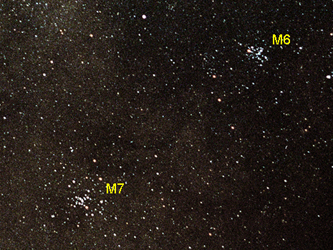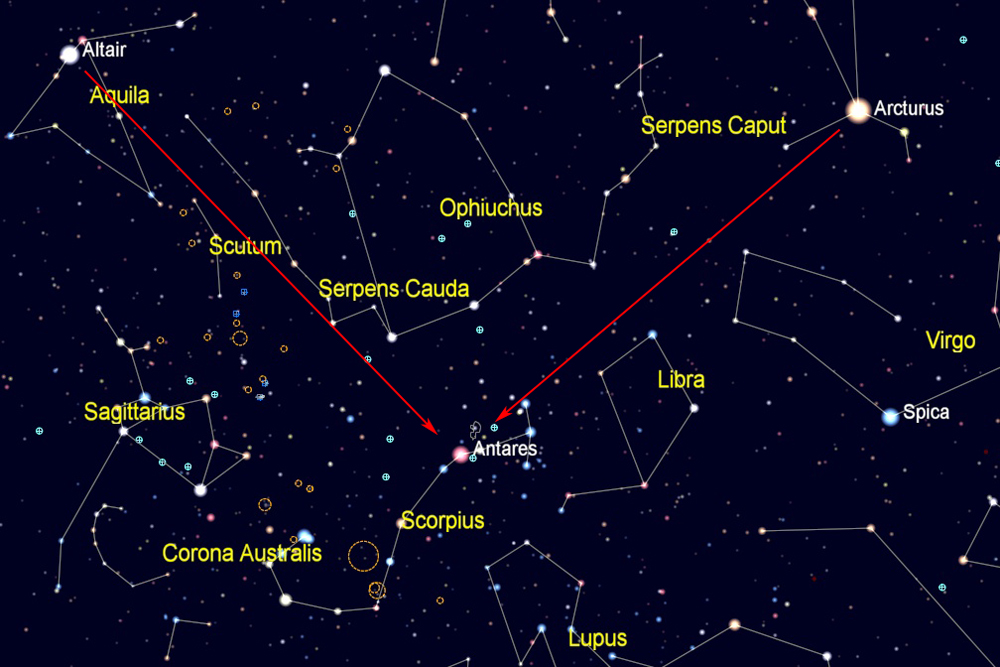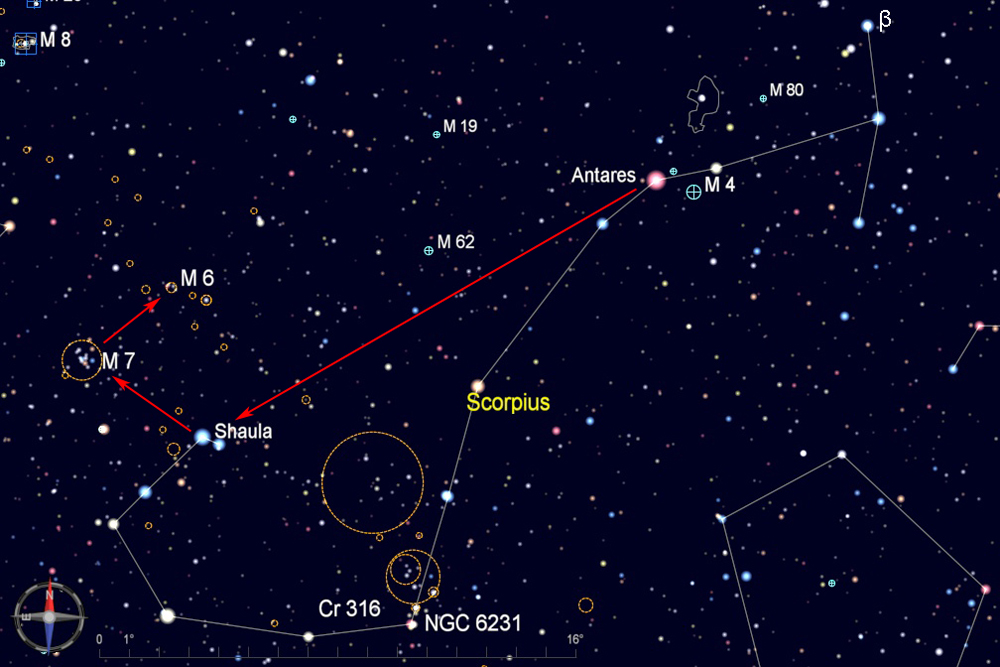| These two open clusters are among the most attractive in the sky, and they are wonderful sights through a telescope at low power. M6 really does have a recognizable butterfly shape, with a red star on the tip of one wing. M7 is a large cluster of many bright stars, with countless dim stars of the Milky Way in the background. They are about 1600 and 980 light years away, respectively. |
 |
| Evening visibility: |
July-September |
| Best viewed with: |
binoculars, telescope |
| |
Printable chart (pdf) |
View larger image |
Directions:
Start by finding first magnitude Antares, the brightest and reddest star low in the southern sky on summer evenings. To get oriented, note that Antares is about 60 degrees southwest of Altair (part of the Summer Triangle) and a similar distance southeast of Arcturus (part of the Spring Triangle). Antares represents the eye of Scorpius, and on a clear night you should be able to see the curving shape of the scorpion if you have a good view of the southern horizon.
|
.. |
| From Antares, look about 20 degrees to the east-southeast for a bright pair of stars (including Shaula, magnitude 1.6) that form the tip of the scorpion's tail. This distictive pair is easy to see as long as you have a good view of the southern sky. From Shaula, M7 is about 4 degrees to the northeast, and at magnitude 3.3 it is relatively easy to see with the naked eye. M6 is just 4 degrees northwest of M7, and at magnitude 4.2 it can also be seen with the naked eye under dark skies. Both clusters are easily seen in binoculars. |
 |
| Star charts created with Cartes du Ciel |
| |
| |


